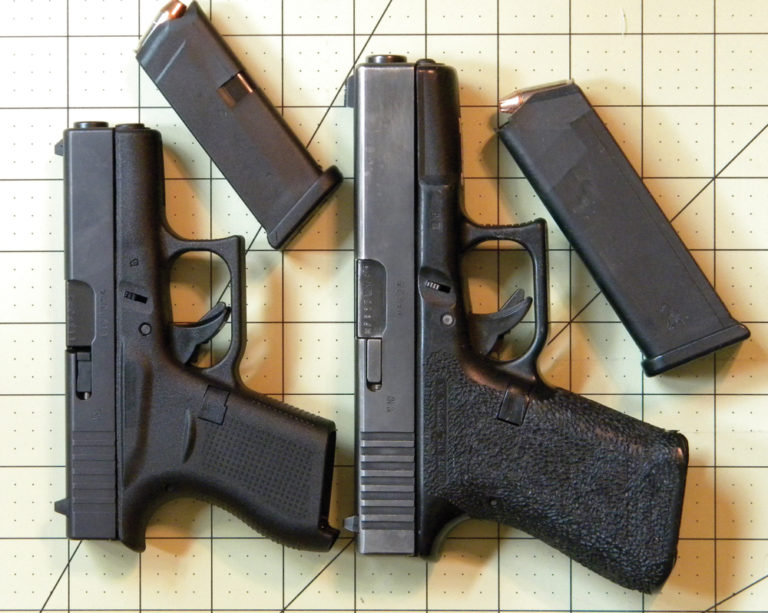
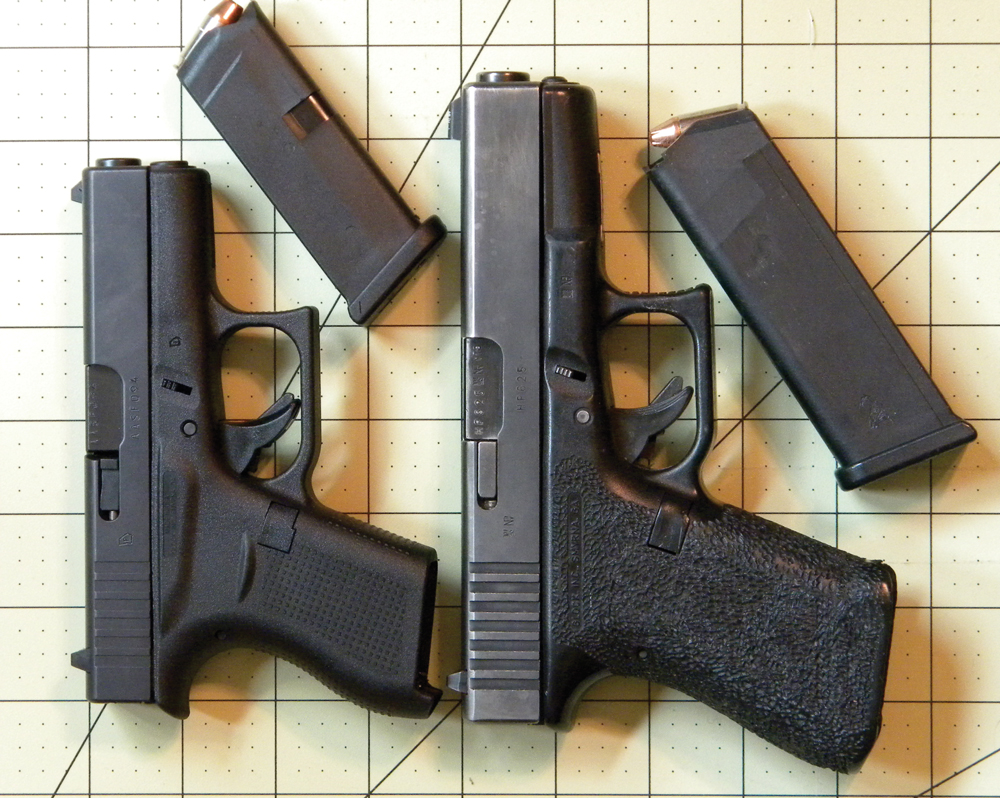
It’s not enough to own a gun and shoot it a few times a year. To be prepared to defend yourself and your family, regular handgun shooting practice is a must. Get the most from those sessions.
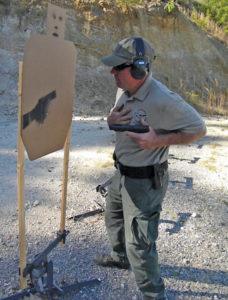 The handguns of today are smaller and more powerful than ever, allowing a person to carry a viable weapon, concealed and ready for use. Ask people what they have at home for self-defense and the most common response will be a pistol. More people own and carry handguns now than any other time in our nation’s history. But, just having a firearm doesn’t prepare you to use that weapon efficiently to stop an attack. To properly use a handgun, both safely and effectively, requires application of basic defensive fundamentals such as movement, communication, using cover, shooting, if necessary, and thinking. Applying these fundamentals in response to a sudden, violent attack requires an introduction to these training principals followed by plenty of practice. Learning through repetition is a must for any shooter to become proficient and prepared.
The handguns of today are smaller and more powerful than ever, allowing a person to carry a viable weapon, concealed and ready for use. Ask people what they have at home for self-defense and the most common response will be a pistol. More people own and carry handguns now than any other time in our nation’s history. But, just having a firearm doesn’t prepare you to use that weapon efficiently to stop an attack. To properly use a handgun, both safely and effectively, requires application of basic defensive fundamentals such as movement, communication, using cover, shooting, if necessary, and thinking. Applying these fundamentals in response to a sudden, violent attack requires an introduction to these training principals followed by plenty of practice. Learning through repetition is a must for any shooter to become proficient and prepared.
MOVE
The Skill: You move during an attack to create distance between you and a threat. Distance reduces your chance of being injured, no matter what type weapon, if any, the threat is armed with. In order to obtain a clear field of fire it may be necessary to move because of bystanders or the environment. You move to cover and the protection it provides. Moving puts the threat into a reactive mode. Initially you may be in a reactive state because you didn’t start the confrontation, but as soon as possible you need to make the threat start reacting to you. Moving is one of the best ways to achieve this. With repetitive practice moving in response to a threat while armed with a firearm can be programmed.
Master the Skill: The best way to practice moving is with dry work, using a dummy pistol or even your pretend pistol. Few of us have the time, ammo or a facility to run live fire drills necessary to learn how to move and, if necessary, shoot while moving. With a dummy or blue gun you can practice moving and drawing the weapon from concealment, without the worries associated with working with a real handgun. Still treat the plastic pistol like it’s real, following the big four safety rules, to minimize the development of bad habits.
For example, I’ll holster my Glock 19 blue gun, and watch a show on television. I decide the next time I see a certain character on screen I’m moving left, or right or back, while drawing my pistol. If it’s a movie with lots of gunplay I move when a weapon appears. This is an easy way to program movement in response to an unexpected cue.
Airsoft weapons, which fire plastic balls, are great tools for practicing movement. You still have to pay attention to safety—the pellets travel fast enough to hurt—but they allow you to practice inside a garage or backyard. When you get the chance to practice these skills on a range, focus on efficiency, not speed. Start with the pistol holstered. On command or cue you move, draw and engage your target with one or two accurate shots while moving. Eventually you work on multiple hits to the different zones of the target.
COMMUNICATE
The Skill: Communication is a key tactical skill that is often overlooked. You communicate with a threat: “Leave my home now!” More than two million times a year the presence of a weapon and strong verbal commands diffuse potentially violent confrontations, and this is just what’s documented. You’ll need to communicate with family, friends or bystanders. Sometimes it’s good to talk to yourself. It may sound funny, but verbalizing your actions helps maintain mental focus.
Communication is best kept short and simple. For example, “Bob, move toward that exit and call 911!” Using a name first helps get that person’s attention. Also keep in mind almost everyone experiences auditory exclusion under stress. You’ll have to yell out loud, maybe more than once. Communication consumes a big part of our brain’s resources, so it’s necessary to practice it in advance.
Master the Skill: You can practice communication with your partners or family during dry drills. Every time you go to the range communication should be a part of your practice. For example once you’ve engaged your target you announce, “Threat down!” to let your partner know the status of your threat. The real world has all types of obstructions. You’ll have a different view of the world than your partner, and vice versa. Once the threats are down you scan, communicating with your team that it’s clear left and rear, or whatever your area of responsibility is. Then you’re announcing where cover is, the exit or any other critical information. The other shooters on the range may be amused, but we don’t care what they think, we’re developing our defensive skills.
USE COVER
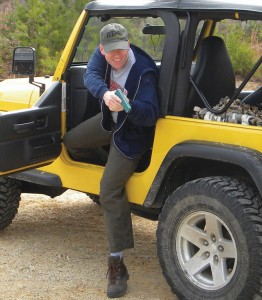 The Skill: Cover provides a physical barrier between you and a threat. Whenever possible, even if you think the fight is over, use it. To use cover there are a few principles to apply, keeping in mind there are always exceptions. Create and maintain distance from the object you’re using for protection to greatly reduce the chance of being injured by fragmentation and debris created if bullets are bouncing off that object. Most objects offer a certain degree of protection, but they aren’t bulletproof. About three pistol rounds, even fewer high-velocity rifle rounds, will punch a hole through a concrete block.
The Skill: Cover provides a physical barrier between you and a threat. Whenever possible, even if you think the fight is over, use it. To use cover there are a few principles to apply, keeping in mind there are always exceptions. Create and maintain distance from the object you’re using for protection to greatly reduce the chance of being injured by fragmentation and debris created if bullets are bouncing off that object. Most objects offer a certain degree of protection, but they aren’t bulletproof. About three pistol rounds, even fewer high-velocity rifle rounds, will punch a hole through a concrete block.
When you are able move to better cover or toward an exit or escape route. Distance also opens up your field of view, allowing you to see more of what’s going on in your environment. When possible, work around the side of cover, as opposed to over the top, which exposes all of your head. Don’t discount the value of concealment. It doesn’t offer any ballistic protection, but if they don’t know where you are, the chances of them attacking you are greatly reduced.
Master the Skill: Dry practice, again, is the best way to work on cover. With your dummy pistol, or your “pretend” pistol—your hands—work with the furniture and corners in your home as cover, focusing on exposing the least amount of your body in order to locate, identify and, if necessary, engage the threat. A great way to fine-tune your position is by using the edge of a mirror as the edge of your cover. As you lean out, you get to see what the bad guy sees, and you can adjust your position accordingly. It’s the mental and physical aspects of using cover that are important to practice, getting these skills programmed into your mind in advance.
Airsoft can be used to practice firing from cover. All you need is something set up to represent cover and a target. You begin a few steps to the left or right of your cover. On cue you’re moving, drawing the pistol, issuing verbal commands and engaging the target. With the proper preparation you can do a form of “force-on-force” practice with the Airsoft, working against live, thinking and reacting opponents.
On the range do the same thing. For example a target stand with cardboard can represent cover. You practice working on moving, communicating, using cover and firing accurate shots on target.
SHOOT
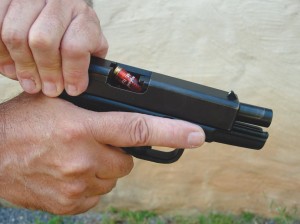 The Skill: The firearm is like any other tool. You have to work with it a lot in order to use it effectively. If it’s necessary to shoot to stop the threat, you apply the fundamentals of marksmanship: aim, hold, press and follow-through for every shot. You must practice until you can fire an accurate shot. After each shot, you follow through, recovering from the recoil, reacquiring a new sight picture and resetting the trigger in anticipation of firing again, because multiple shots will probably be necessary to stop the threat.
The Skill: The firearm is like any other tool. You have to work with it a lot in order to use it effectively. If it’s necessary to shoot to stop the threat, you apply the fundamentals of marksmanship: aim, hold, press and follow-through for every shot. You must practice until you can fire an accurate shot. After each shot, you follow through, recovering from the recoil, reacquiring a new sight picture and resetting the trigger in anticipation of firing again, because multiple shots will probably be necessary to stop the threat.
Master the Skill: The shooting range, where about all you can do is fire one shot at a time, is the place to practice these fundamentals. Eventually, through repetition, you will get to where you can fire an accurate shot subconsciously.
Manipulation skills are an important part of owning a pistol. It’s mandatory to know how to load and unload safely. During a confrontation, if you have a malfunction, or the weapon runs empty, you must clear the stoppage or reload efficiently without delay.
Dummy ammo allows you to practice these manipulations, plus the basics like loading and unloading, without going to the range. On the range you can mix in dummy ammo with live rounds in the magazine for malfunctions at unexpected times.
THINK
The Skill: Basically it’s problem solving at high speed. You’re presented a problem. Normally you have a very short amount of time to come up with a solution to the problem and apply the proper response.
Master the Skill: To develop these skills constantly play the “what if” game. While having lunch at your favorite spot you’re thinking about what if someone comes through that door and begins an attack. Where is the best location to be in case there is an attack, protective cover or an alternative exit? While sitting at a red light, you’re scanning, again thinking about what you’ll do if an attack occurs. Not only will this improve your thinking ability, but it will help you develop better situational awareness.
This article is an excerpt from the Summer 2014 issue of Modern Shooter magazine, presented by Gun Digest.

Next Step: Get your FREE Printable Target Pack
Enhance your shooting precision with our 62 MOA Targets, perfect for rifles and handguns. Crafted in collaboration with Storm Tactical for accuracy and versatility.
Subscribe to the Gun Digest email newsletter and get your downloadable target pack sent straight to your inbox. Stay updated with the latest firearms info in the industry.

![Best Concealed Carry Guns In 2025 [Field Tested] Wilson Combat EDC X9S 1](https://gundigest.com/wp-content/uploads/Wilson-Combat-EDC-X9S-1-324x160.jpg)


![Best 9mm Carbine: Affordable PCCs [Tested] Ruger Carbine Shooting](https://gundigest.com/wp-content/uploads/Ruger-Carbine-Shooting-100x70.jpg)
![Best AR-15: Top Options Available Today [Field Tested] Harrington and Richardson PSA XM177E2 feature](https://gundigest.com/wp-content/uploads/Harrington-and-Richardson-PSA-XM177E2-feature-100x70.jpg)
